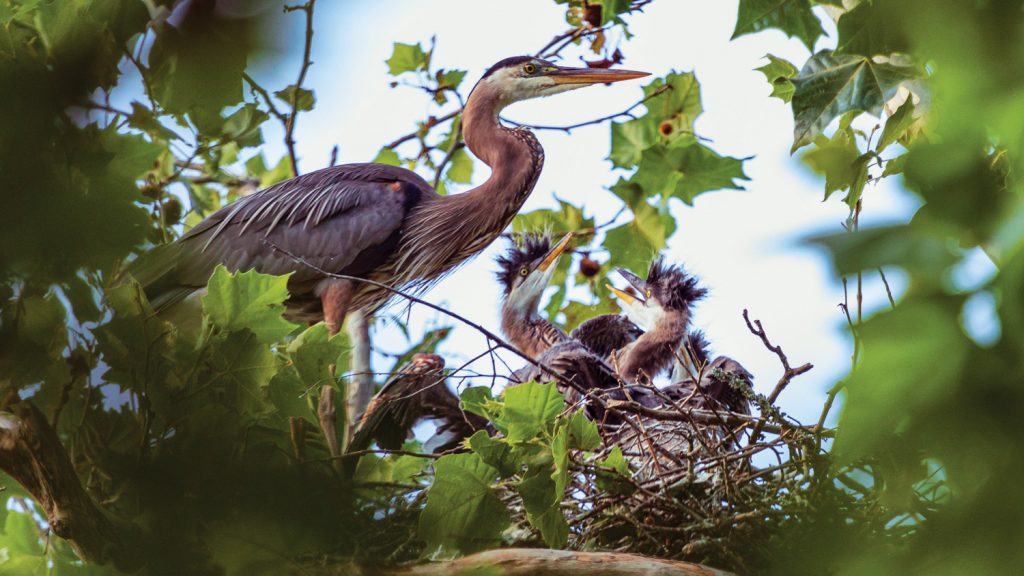“Great Blue Heron with Nestlings” by Robin Conover
Canon EOS 5D Mark IV, EF 100-400 mm, 4.5–5.6 L lens at 400 mm
ISO 640, f5.6 at 1/320th of a second, Gitzp tripod
For me, photographing nesting and feeding activities of great blue herons has often been done from a great distance across a body of water — not exactly opportune conditions for photographs. This year is quite an exception.
Early in March, the regular photography bunch at Radnor Lake in Nashville observed a male great blue heron beginning to build a nest in a surprising location to attract a mate. Rather than across the lake on a secluded point, he chose an American sycamore tree along Otter Creek Road.
The tree leans over the water, and the nest is located about 35 feet above the lake. At first, we didn’t hold much hope that he would attract a mate with this location. One heron, possibly the same bird, had tried this spot last year without success.
This heron, though, landed a mate, and all the human activity along Otter Creek Road — heavily traveled by walkers and talkers on a daily if not hourly basis — doesn’t seem to have bothered the nesting pair at all. They have successfully hatched three nestlings that all seem to be doing well.
I was observing the nest one late afternoon in early June when a loud clattering of “frawk, frawk, frawk” calls came from a distance as an adult landed for a feeding. The three exuberant nestlings appeared to wrestle for the best location and the most attention for food. One was clearly dominant as “survival of the fittest” had begun for them.
People passing by me with my tripod set up always want to see what I’ve found. With social distancing, this is now a little awkward, but I’m always glad to speak with anyone. Many people automatically assume it’s the female on the nest with the young, but in reality, it could be either adult. Both tend to the young with feedings throughout the day. It’s difficult to tell male from the female great blue herons. Unlike with other birds, their markings are the same.
These nestlings will stay in the nest anywhere from 50 to 80 days before fledging. In this photograph, you can see their juvenile plumage and the beginnings of flight feathers.
Attributing human emotions to animals isn’t always a direct parallel that should be drawn, but as I photographed the nest activities, I couldn’t help it. The two great blue heron “parents” seemed to be sharing the responsibilities and stresses that all of us who are socially distancing and home schooling are facing. As soon as one adult returned with food, the other quickly took flight, perhaps appreciating a break to enjoy some alone time fishing.



